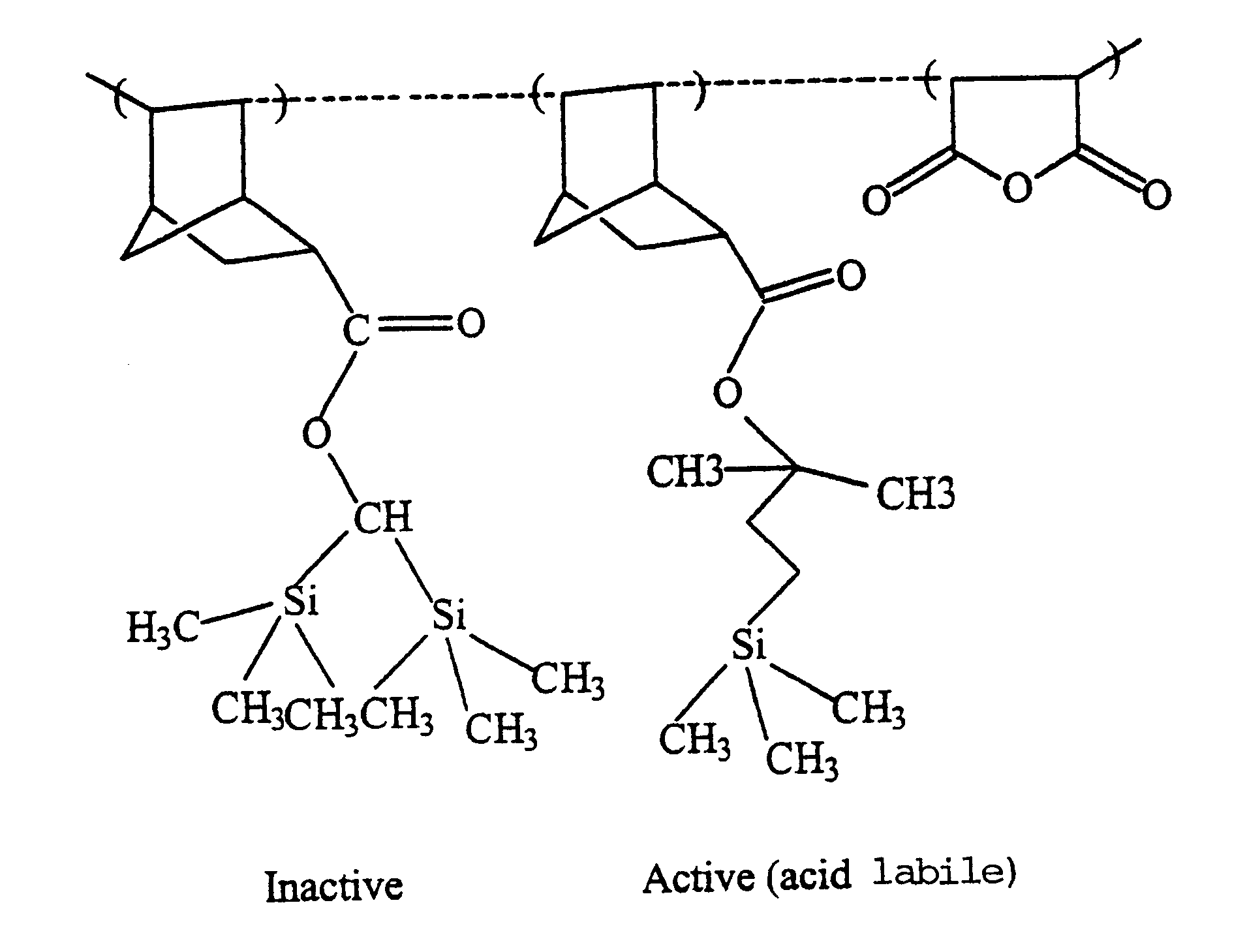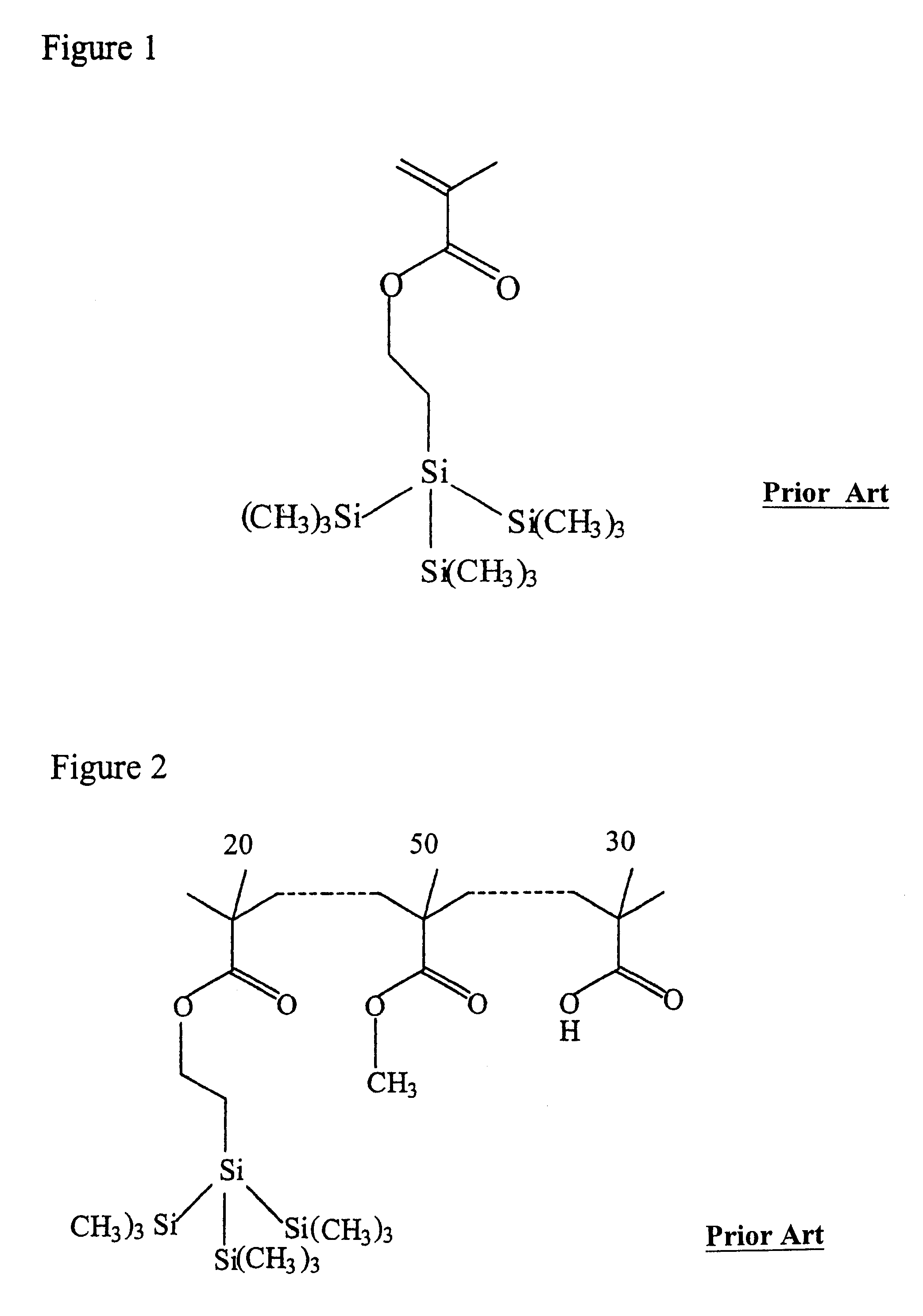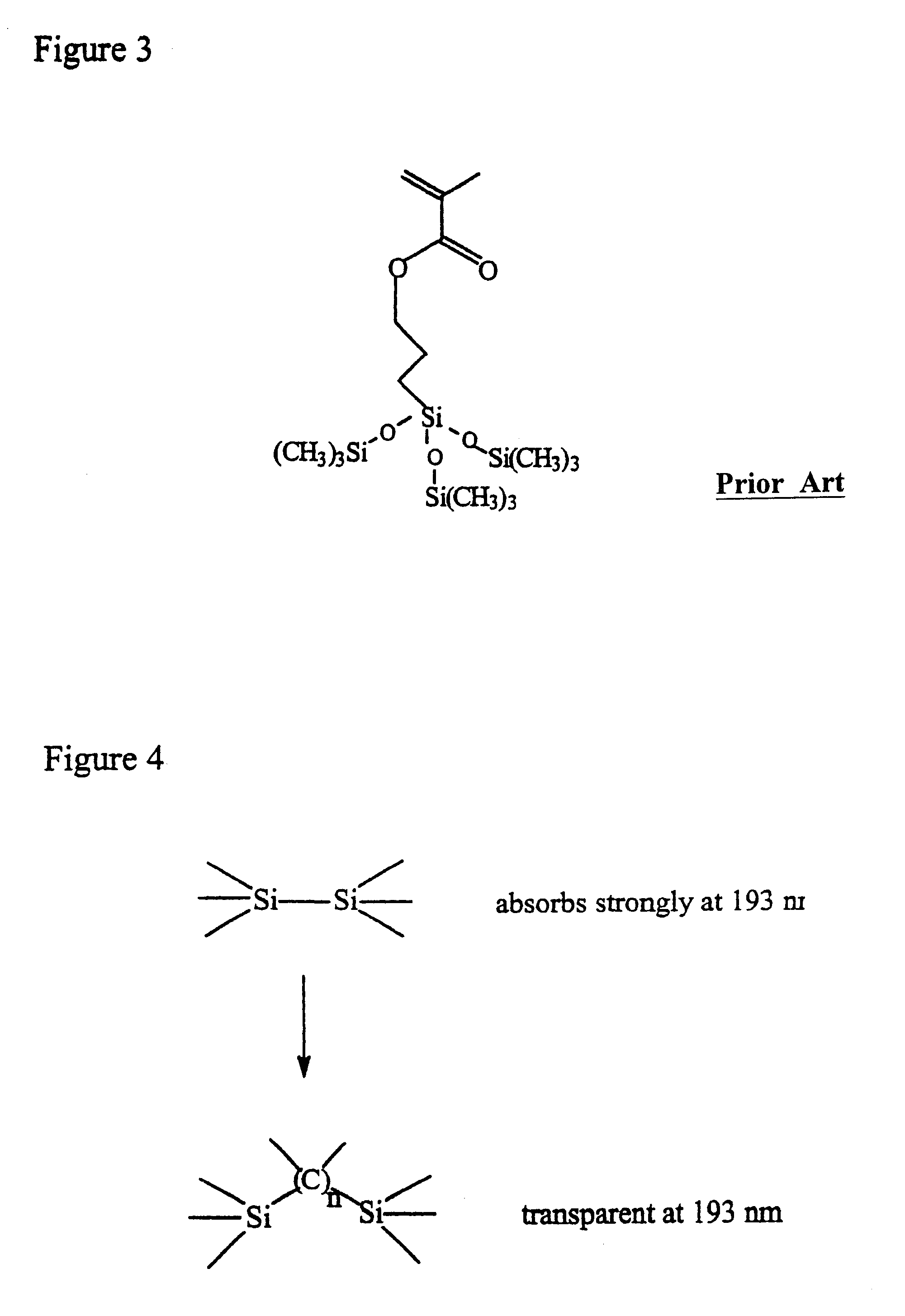High silicon content monomers and polymers suitable for 193 nm bilayer resists
a technology of monomers and polymers, which is applied in the direction of photosensitive materials, instruments, photomechanical equipment, etc., can solve the problems of reducing the depth of focus (dof) of imaging radiation, requiring a reduction in the thickness of imaging resist films, and reducing the do
- Summary
- Abstract
- Description
- Claims
- Application Information
AI Technical Summary
Problems solved by technology
Method used
Image
Examples
example 1
Synthesis of Bis(trimethylsilyl)methylmethacrylate
Bis(trimethylsilyl)chloromethane (Aldrich) (14.68 g, 0.075 mole), sodium methacrylate (8.96 g, 0.0825 mole), Adogen 464 (Aldrich) (1.70 g), and phenothiazine (0.05 grams) were placed in a round bottom flask equipped with a condenser, mechanical stirrer and a nitrogen inlet. The flask was charged with 200 ml acetonitrile and heated to reflux while stirring. After 4 days, the mixture was filtered to remove the solids and the solvent was removed in a rotary evaporator. Fractional distillation under reduced pressure gave 10.90 grams (60% yield) of a clear liquid at 46-48.degree. C. at 0.5 mm pressure.
example 2
Synthesis of 2-Trimethylsilylethylmethacrylate
2-Trimethylsilylethanol (Aldrich) (30 g, 0.25 mole) was placed in a round bottom flask equipped with a condenser, addition funnel, magnetic stirrer and a nitrogen inlet. 200 ml dichloromethane, pyridine (20.80 g, 0.26 mole) and 100 mg of phenothiazine were added to the flask. While stirring, methacryloyl chloride (27.18 g, 0.26 mole) in 100 ml dichloromethane was added dropwise at room temperature. A mildly exothermic reaction occurred. The mixture was stirred overnight at room temperature. Afterwards, the mixture was washed with 1.times.100 ml deionized water and 2.times.100 ml brine and dried over anhydrous magnesium sulfate. The solution was concentrated in vacuo. Fractional distillation under reduced pressure gave 20.82 grams of the desired product at 35-38.degree. C. at 0.5 mm.
example 3
Synthesis of a Terpolymer Comprising Bis(trimethylsilyl)methyl Methacrylate, 2-trimethylsilylethyl Methacrylate, and Itaconic Anhydride
Bis(trimethylsilyl)methyl methacrylate (2.44 g, 0.01 mole), 2-trimethylsilylethyl methacrylate (2.80 g, 0.025 mole), and itaconic anhydride (2.80 g, 0.025 mole) were placed with 25 ml of tetrahydrofuran (THF) in a round bottom flask equipped with a condenser and a nitrogen inlet. Azoisobutyronitrile (AIBN) (0.33 g) was added to this solution and stirred until dissolved. Then the solution was evacuated with the aid of a Firestone valve and purged with nitrogen four times. The contents were then heated to reflux for 18 hours. Afterwards, the solution was diluted with acetone (20 ml) and added dropwise into hexanes (800 ml). The precipitated polymer was filtered (frit), washed twice with hexanes (50 ml) dried under vacuum at 60.degree. C. Yield: 5.6 grams. Mw=13,000.
PUM
| Property | Measurement | Unit |
|---|---|---|
| wavelength | aaaaa | aaaaa |
| wavelength | aaaaa | aaaaa |
| mol % | aaaaa | aaaaa |
Abstract
Description
Claims
Application Information
 Login to View More
Login to View More - R&D
- Intellectual Property
- Life Sciences
- Materials
- Tech Scout
- Unparalleled Data Quality
- Higher Quality Content
- 60% Fewer Hallucinations
Browse by: Latest US Patents, China's latest patents, Technical Efficacy Thesaurus, Application Domain, Technology Topic, Popular Technical Reports.
© 2025 PatSnap. All rights reserved.Legal|Privacy policy|Modern Slavery Act Transparency Statement|Sitemap|About US| Contact US: help@patsnap.com



